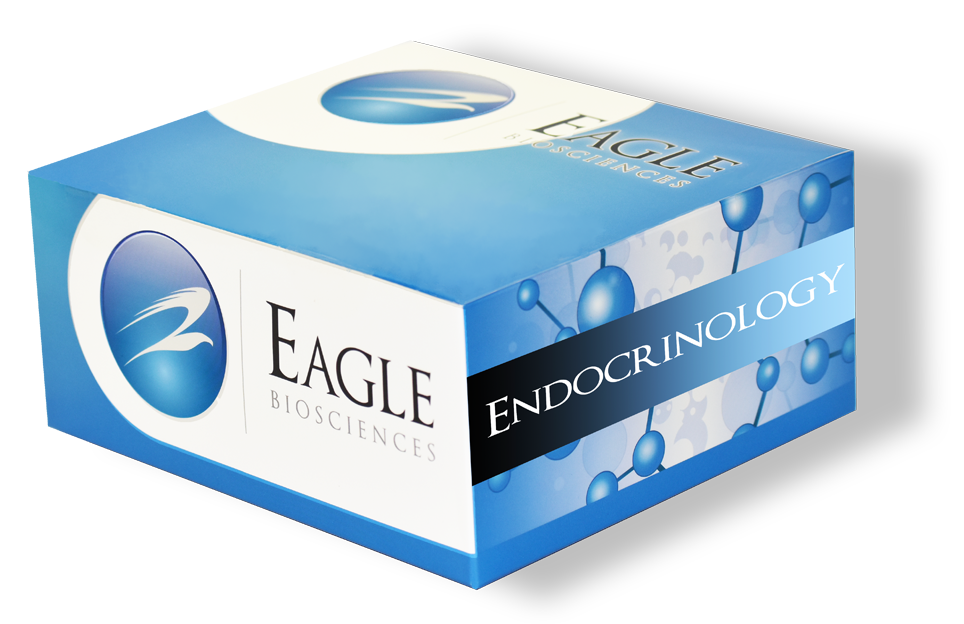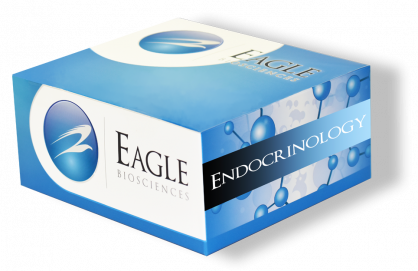IA2 ELISA Assay Kit
IA2 ELISA Assay Kit is for research use only.
Size: 1 × 96 wells
Sensitivity: 0.37 IU/mL
Standard Range: 7.5 – 350 IU/mL
Incubation Time: Overnight + 1 hour 20 minutes
Sample Type: Serum, Plasma
Sample Size: 50 µL
Alternative Names: Protein Tyrosine Phosphatase, IA2
Controls Included
Assay Background
Type 1 diabetes, also known as insulin-dependent diabetes mellitus (IDDM), results from a chronic autoimmune destruction of the insulin-secreting pancreatic beta cells, probably initiated by exposure of genetically susceptible host to an environmental agent. Autoimmune destruction of beta cells is thought to be completely asymptomatic until 80 – 90% of the cells are lost. This process may take years to complete and may occur at any time. During the preclinical phase, this autoimmune process is marked by circulating autoantibodies to beta cell antigens. These autoantibodies are present years before the onset of type 1 diabetes and prior to clinical symptoms.
Early studies involved immunofluorescence test for islet-cell antibodies (ICA), which was exhibited issues with calibration and has subsequently been replaced by a combination of several immunoassays for antibodies against specific beta cell antigens, such as insulin (IAA), glutamic acid decarboxylase (GAD) and tyrosine phosphatase ICA 512 (IA2). IA2, a member of the protein tyrosine phosphatases family is localized in the dense granules of pancreatic beta cells and the second defined recombinant islet cell antigen. IA2 shares sequence identity with the islet cell antigen 512. The higher frequency of antibodies to IA2 is explained by the presence of autoantibodies directed to the carboxy- terminus of IA2 which is lacking in ICA512. IA2 autoantibodies are present in the majority of individuals with new-onset type 1 diabetes and in individuals in the pre-diabetic phase of the disease. The appearance of autoantibodies to IA2 seems to be correlated with the rapid progression to overt type 1 diabetes.
Using a combination of tests for GAD65 and IA2 autoantibodies improves the risk assessment of type 1 diabetes in children and adolescence. The screening for GAD65 and IA2 autoantibodies detect more than 90 % of subjects at risk for type 1 diabetes and may possess the potential to replace ICA technique.
Assay Principle
The assay system uses the ability of IA2 antibodies to act divalently and form a bridge between immobilized IA2 and liquid-phase IA2-Biotin. In the first step IA2 antibodies from the sample bind to IA2 coated on the microtiter plate. In a second step IA2-Biotin binds to this complex. The bound IA2-Biotin correlates with the amount of IA2 antibodies in patient’s serum. Unbound IA2-Biotin is removed by the washing step. The bound IA2-Biotin is quantified by addition of Streptavidin-peroxidase and a chromogenic substrate (TMB) and reading the optical density (OD) at 450 nm. The concentration of anti IA2 antibodies is calculated through a calibration curve.


